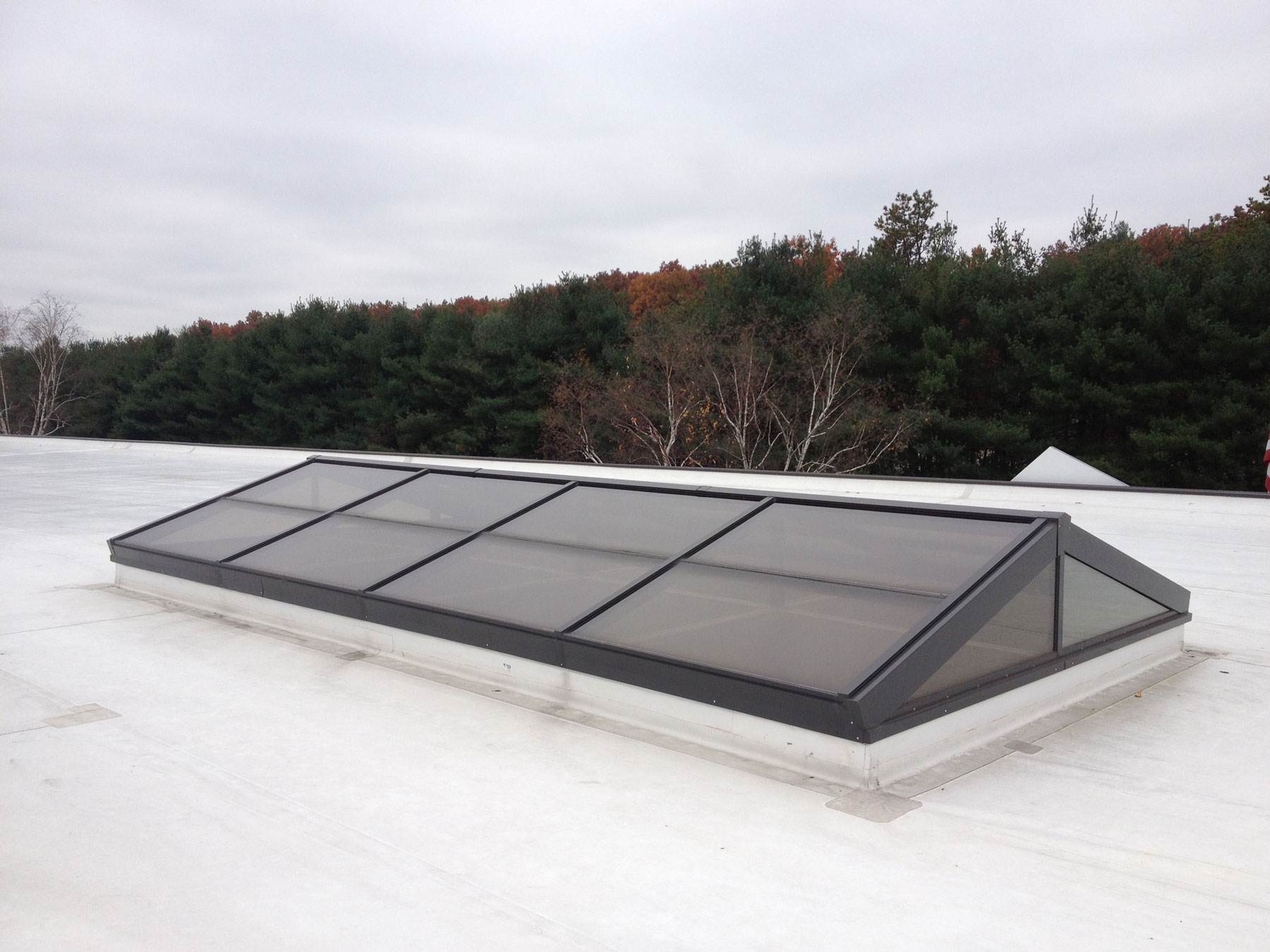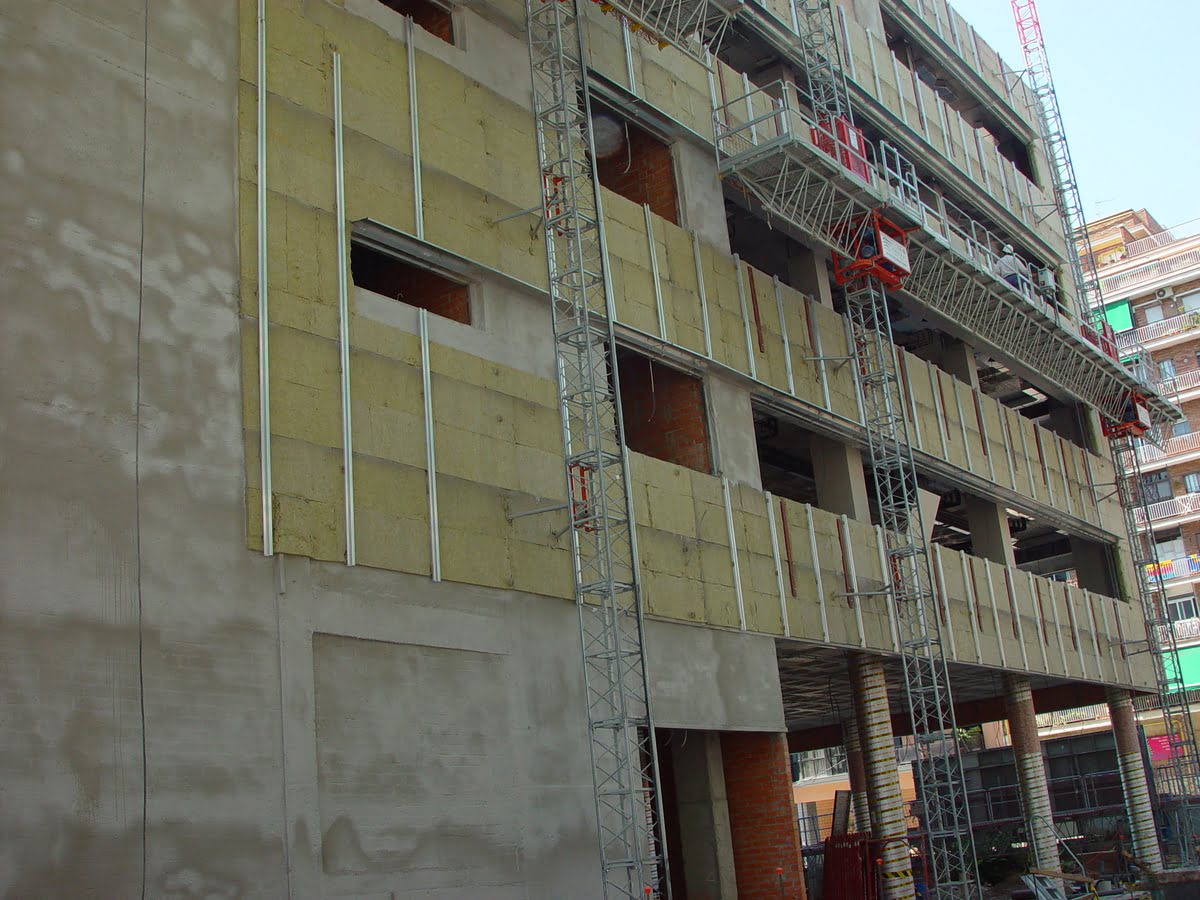Home>diy>Building & Construction>What Does DLO Stand For In Construction


Building & Construction
What Does DLO Stand For In Construction
Modified: September 1, 2024
Discover what DLO stands for in building construction and how it impacts your project's timeline and cost. Explore the meaning and importance of DLO in construction.
(Many of the links in this article redirect to a specific reviewed product. Your purchase of these products through affiliate links helps to generate commission for Storables.com, at no extra cost. Learn more)
Introduction
When it comes to the world of construction, there are numerous terminologies and acronyms that can seem quite overwhelming to those who are not familiar with the industry. One such acronym that often leaves people scratching their heads is DLO. DLO stands for Dead Load Only, and it plays a crucial role in construction projects, especially in regards to structural design and safety considerations. In this article, we will delve deeper into the definition of DLO and explore its importance, applications, advantages, challenges, and compare it with other construction methods. So let’s dive in and unravel the mystery of DLO in construction.
Key Takeaways:
- Dead Load Only (DLO) is a critical factor in construction, ensuring structural integrity, safety, and cost-effectiveness. Accurate estimation of DLO enables efficient design, material selection, and compliance with building codes.
- The future of DLO construction is marked by advancements in material technology, digital tools, monitoring systems, modular construction, and smart technologies. These innovations will enhance the accuracy and sustainability of incorporating DLO in construction projects.
Read more: What Does PR Stand For In Construction
Definition of DLO in Construction
DLO, or Dead Load Only, is a term used in the construction industry to refer to the static weight of a building or structure. It represents the permanent, non-moving load that is always acting on the structure, irrespective of any external factors or activities. Dead load includes the weight of the building materials themselves, such as concrete, steel, wood, bricks, and other components like walls, floors, roofs, and fixtures.
Dead load is an essential consideration in the design and construction of any building as it directly impacts the structural integrity and safety of the structure. By accurately estimating the Dead Load Only, engineers and architects can determine the required strength, size, and placement of structural elements such as columns, beams, and foundations.
Calculating the Dead Load Only involves analyzing and summing up the weights of all individual components that contribute to the overall load on the structure. This includes accounting for both permanent and semi-permanent elements, such as masonry walls, flooring systems, and permanent fixtures. However, it does not include variable loads like live loads (people, furniture, equipment), snow, wind, or seismic loads, which are considered separately.
DLO also extends to the self-weight of architectural finishes, like plaster, flooring, and cladding. These elements, although non-structural, add to the overall dead load and must be accounted for during the design process. By accurately estimating the DLO, architects can ensure that the structure can withstand the anticipated loads without compromising its safety, stability, or durability.
While dead load is stationary and unchanging, it is paramount to regularly reassess the DLO throughout the construction process. This is particularly important if there are any modifications, renovations, or additions to the building, as they may affect the overall dead load. By accounting for these changes, engineers can ensure that the structure is designed and constructed to withstand the expected loads and remains safe for its intended use.
Importance of DLO in Construction Projects
The Dead Load Only (DLO) holds significant importance in construction projects for multiple reasons. Let’s explore why DLO is a crucial consideration in the construction industry:
- Structural Integrity: DLO helps in ensuring the structural integrity and stability of a building. By accurately calculating and accounting for the dead load, engineers can design and allocate the appropriate amount of strength, size, and placement of structural elements. This ensures that the structure can safely support its own weight and any additional loads that may be placed upon it.
- Safety Considerations: Dead load is an essential factor in determining the safety of a building. By accurately assessing the DLO, engineers can ensure that the structure is not overloaded, reducing the risk of structural failure, collapses, or other hazardous incidents. This is especially crucial in high-rise buildings, bridges, and other structures where the consequences of a failure can be catastrophic.
- Cost Estimation: Estimating the DLO accurately enables accurate cost estimation for a construction project. By knowing the dead load, contractors can determine the quantity of building materials required, helping in budget planning and procurement. It also helps in determining the machinery and equipment needed to handle and transport the materials safely.
- Sustainability and Environmental Impact: By considering the DLO, architects and engineers can design buildings that are sustainable and energy-efficient. By accurately estimating the dead load, they can optimize the design to reduce material waste and excess structural elements. This leads to a more sustainable construction process and a minimized environmental impact.
- Compliance with Building Codes: Building codes and regulations specify the minimum requirements for structural safety. Dead load calculations are an essential part of code compliance. By accurately calculating the DLO, engineers can ensure that the structure meets the prescribed safety standards and withstands foreseeable loads without compromising the safety of occupants or the public.
The importance of DLO in construction projects cannot be overemphasized. It is a critical factor in ensuring the structural integrity, safety, and cost-effectiveness of a building. By accurately estimating and accounting for the dead load, engineers and architects can design structures that are durable, safe, and able to withstand the test of time.
Common Applications of DLO in Construction
The concept of Dead Load Only (DLO) is applied across various stages of construction projects. Let’s explore some common applications of DLO in the construction industry:
- Structural Design: DLO plays a vital role in the structural design phase of a construction project. Engineers use the estimated dead load to determine the appropriate size and placement of structural elements such as beams, columns, and foundations. By accurately calculating DLO, engineers can ensure that the structure is designed to withstand the expected loads and remains safe and stable.
- Material Selection: DLO helps in selecting the appropriate building materials for construction projects. The dead load estimation helps determine the weight of the materials required for construction. This information is essential for procurement and ensuring that the materials meet the necessary strength and durability standards.
- Load Capacity Assessment: DLO is used to assess the load-bearing capacity of existing structures. Engineers analyze the dead load to ensure that the structure can support any additional loads that may be imposed on it, such as renovations, extensions, or changes in occupancy. By considering the existing dead load, engineers can determine if any structural reinforcement or modifications are necessary.
- Building Inspections: During building inspections, dead load calculations are used to verify that the structure is complying with the required safety standards. Inspectors assess the weight and distribution of the dead load to ensure that the structure remains safe and stable over time.
- Site Preparation: Dead load considerations influence site preparation activities, such as excavation, foundation design, and soil compaction. Proper assessment of the dead load helps engineers determine the necessary foundation depth and strength, providing a solid and stable base for the construction.
DLO has a wide range of applications in construction, from the initial planning and design stages to the ongoing maintenance and assessment of structures. By accurately estimating the dead load and considering it throughout the construction process, engineers can ensure that the structure is safe, durable, and able to withstand anticipated loads.
Advantages and Benefits of DLO in Construction
The use of Dead Load Only (DLO) in construction offers numerous advantages and benefits that contribute to the overall quality and success of a construction project. Let’s explore some of the key advantages and benefits of incorporating DLO in construction:
- Accurate Structural Design: By considering DLO, engineers can accurately design the structure to withstand the permanent weight and ensure its structural integrity. This leads to a more efficient and effective design process, reducing the risk of overloading or undersizing structural elements.
- Enhanced Safety: DLO calculations help ensure the safety of the building and its occupants. By accurately accounting for the dead load, engineers can assess the load-bearing capacity and prevent structural failures or collapses. This is particularly important in areas prone to heavy snow, earthquakes, or high wind loads.
- Cost Savings: Estimating the dead load accurately allows for efficient material planning and procurement. By knowing the required quantities of building materials, contractors can avoid over-purchasing and minimize waste, leading to cost savings in the construction process.
- Sustainable Construction: By considering DLO, architects and engineers can design sustainable buildings by optimizing the use of materials. Efficient material usage reduces waste and the environmental impact of the construction process. Additionally, designing structures to handle the dead load effectively can result in longer-lasting buildings, reducing the need for frequent repairs or replacements.
- Code Compliance: Incorporating DLO in construction ensures compliance with building codes and regulations. By accurately estimating and adhering to the prescribed dead load limits, construction projects meet the required safety standards and pass inspections more efficiently.
- Improved Construction Planning: Consideration of DLO during the planning phase enables better construction project management. Precise estimation of the dead load allows for more accurate scheduling, resource allocation, and sequencing, leading to optimized construction timelines and improved project delivery.
The advantages and benefits of using DLO in construction are significant. From ensuring accurate structural design and enhanced safety to cost savings and sustainability, incorporating DLO in construction projects contributes to overall project success and client satisfaction. By considering the dead load at every stage of the construction process, engineers and architects can create robust and resilient structures that meet safety standards while optimizing resources and reducing environmental impact.
DLO stands for Direct Labour Organisation in construction. It refers to a team of workers directly employed by a client to carry out construction work, rather than using subcontractors.
Read more: What Does SD Stand For In Construction
Challenges and Limitations of DLO in Construction
While Dead Load Only (DLO) is a crucial aspect of construction, it also presents certain challenges and limitations that need to be considered. Let’s explore some of the common challenges and limitations associated with DLO in construction:
- Variations in Material Weights: The weight of building materials can vary depending on factors such as the quality, thickness, and moisture content. This can pose a challenge in accurately estimating the dead load, as slight variations in the weight of materials can impact the structural design and load-bearing capacity.
- Difficulty in Estimating Interior Finishes: Estimating the weight of interior finishes can be challenging as it requires a detailed understanding of the materials used, such as wall coverings, floorings, and ceilings. The wide range of materials available in the market makes it difficult to establish a standard weight for estimation purposes.
- Heavy Equipment and Machinery: The use of heavy equipment and machinery during construction can lead to temporary dead loads that are not included in the initial calculations. This additional dead load needs to be carefully considered to ensure the structure can withstand the weight during construction activities.
- Structural Modifications: Any modifications or alterations made to the structure during the construction process can impact the dead load. This includes factors such as removing or adding walls, changing the floor layout, or incorporating additional fixtures. It is essential to reassess the dead load calculations if any changes are made to ensure the structure remains safe and stable.
- Floors and Live Loads: The dead load calculations do not account for live loads, which include people, furniture, and equipment that may be present on the floors of a building. The additional weight from live loads needs to be considered separately to ensure the structure can handle the combined loads and remains safe for occupancy.
- Complexity in Existing Structures: Assessing the dead load of existing structures can be challenging, especially if accurate as-built information is not available. It may require intrusive investigations or assumptions to calculate the dead load accurately, which can introduce some level of uncertainty into the calculations.
While there are challenges and limitations associated with incorporating DLO in construction projects, it is crucial to address and overcome these challenges through careful assessment, proper documentation, and regular monitoring. By considering these factors, engineers and architects can ensure a safe and stable structure that withstands the intended loads and complies with industry standards and regulations.
DLO vs Other Construction Methods
When it comes to building construction, various methods and techniques are employed to achieve the desired results. Dead Load Only (DLO) is one approach among many others. Let’s compare DLO with some other commonly used construction methods:
- Live Load Dominant Construction: In contrast to DLO, which primarily focuses on the static weight of the structure, live load dominant construction places more emphasis on designing the structure to withstand dynamic loads or loads that vary over time. Live loads include factors such as moving people, equipment, furniture, or any other temporary loads that may act on the structure. While DLO determines the permanent weight of the structure, live load dominant construction considers both the permanent and varying loads to ensure the structure’s stability.
- Composite Construction: Composite construction combines different materials, such as concrete and steel, to create a structurally efficient and cost-effective building system. Unlike DLO, which primarily focuses on the dead load, composite construction takes advantage of the characteristics of different materials to optimize the structural performance and minimize the dead load. This method allows for higher spans and lighter structures, making it suitable for large-scale construction projects.
- Pre-engineered Buildings: Pre-engineered buildings are structures that are manufactured off-site and assembled at the construction site. These buildings are typically designed to optimize efficiency and cost-effectiveness. While DLO applies to all types of construction, pre-engineered buildings are specifically designed and fabricated to withstand the anticipated dead load and often feature lightweight materials. This method allows for quicker construction and reduced material waste.
- Post-tensioning Construction: Post-tensioning is a construction technique that involves applying tension to pre-stressed steel cables or bars within concrete to increase the strength and durability of the structure. This method allows for longer spans, reduced structural deformations, and improved load-carrying capacity. While DLO focuses on the dead load, post-tensioning construction considers the impact of both dead loads and live loads on the structural performance.
- Structural Insulated Panels (SIPs) Construction: SIPs construction utilizes high-performance panels made of rigid foam insulation sandwiched between two structural panels, such as oriented strand board (OSB). This method offers excellent insulation properties, energy efficiency, and ease of construction. Unlike DLO, which primarily focuses on the weight of the structure, SIPs construction combines insulating properties with structural capabilities, resulting in lightweight yet robust buildings.
Each construction method has its own unique advantages and considerations. DLO, in particular, emphasizes the importance of accurately estimating the static weight of the structure to ensure its structural integrity. However, it is essential to consider other factors, such as live loads, material efficiency, construction time, and energy efficiency, when selecting the most appropriate construction method for a specific project. The choice of construction method ultimately depends on the project requirements, budget, timeline, and desired outcome.
Case Studies: Successful Implementation of DLO in Construction
Several notable case studies highlight the successful implementation of Dead Load Only (DLO) in construction projects. These examples demonstrate the importance of accurately estimating and considering the static weight of a structure. Let’s explore a few case studies that showcase the successful implementation of DLO:
- Burj Khalifa, Dubai, UAE: As the tallest building in the world, the Burj Khalifa stands as a testament to the effective implementation of DLO. To ensure the stability and safety of the structure, engineers meticulously calculated the dead load and accounted for the weight of construction materials, permanent fixtures, and architectural finishes. The accurate estimation and consideration of DLO played a crucial role in designing the foundation, columns, and other structural elements, contributing to the overall success and structural integrity of the Burj Khalifa.
- Akashi Kaikyo Bridge, Japan: The Akashi Kaikyo Bridge, also known as the Pearl Bridge, is one of the longest suspension bridges in the world. The accurate estimation of DLO was crucial in designing the bridge’s towers, cables, and support systems. By considering the permanent weight of the bridge components, engineers were able to ensure the stability and load-carrying capacity of the structure, allowing the Akashi Kaikyo Bridge to stand as a remarkable engineering feat.
- Empire State Building, New York, USA: The Empire State Building, an iconic symbol of New York City, relied on accurate estimations of DLO during its construction. Engineers carefully assessed the dead load, including the weight of the steel frame, concrete floors, and masonry walls. This precise calculation allowed for the design and implementation of a robust structure that has stood the test of time and remains an architectural marvel.
- Petronas Twin Towers, Kuala Lumpur, Malaysia: The Petronas Twin Towers, once the tallest twin towers in the world, demonstrated the successful application of DLO. Engineers accurately estimated the dead load to design the towers’ steel frames, reinforced concrete cores, and floors. The incorporation of DLO in the structural design played a crucial role in ensuring the stability and safety of these iconic structures.
- Sustainable Green Buildings: DLO is also a key consideration in the construction of sustainable green buildings. By accurately estimating and minimizing the dead loads, architects and engineers can optimize material usage, reduce carbon footprint, and achieve energy efficiency goals. The successful implementation of DLO in sustainable green building projects showcases the importance of considering dead load in achieving environmentally-friendly construction practices.
These case studies highlight the successful implementation of DLO in a range of construction projects, from skyscrapers to bridges and sustainable buildings. Accurate estimation and consideration of DLO have proven essential in ensuring structural integrity, stability, and the overall success of these remarkable structures.
Future Trends and Innovations in DLO Construction
As the construction industry continues to evolve, various trends and innovations are shaping the way we approach and implement Dead Load Only (DLO) in construction. Let’s explore some of the future trends and innovations that are likely to impact the field of DLO construction:
- Advanced Material Technology: The development of new materials with enhanced strength-to-weight ratios is a significant trend in the construction industry. Advanced materials, such as carbon fiber composites and lightweight alloys, offer the potential to reduce dead loads while maintaining structural integrity. Incorporating these materials in the construction process can result in more efficient and sustainable structures.
- Building Information Modeling (BIM): BIM is an innovative technology that enables the creation of digital models containing detailed information about a building’s geometry, components, and materials. By integrating DLO calculations into BIM models, engineers can visualize and simulate the structural behavior and performance of the building. This allows for better optimization of designs, accurate dead load estimations, and enhanced collaboration among project stakeholders.
- Load Monitoring and Structural Health Monitoring (SHM): The adoption of load monitoring and SHM technologies is on the rise. These technologies utilize sensors, data analytics, and artificial intelligence to continuously monitor the loads and stresses on structures. By collecting real-time data on the dead load and other applied loads, engineers can ensure the safety and integrity of the structure, detect any anomalies, and make informed maintenance or reinforcement decisions.
- Modular Construction: Modular construction, also known as prefabrication, is gaining popularity due to its efficiency and cost-effectiveness. In this method, building components are manufactured off-site and assembled on-site. By considering DLO during the design and manufacturing stages, modular construction can optimize the weight of the modules, reducing transportation costs and minimizing site disruption. This approach allows for quicker construction and improved quality control.
- Smart Structures: The integration of smart technologies into building structures is an emerging trend. Smart structures use sensors, actuators, and control systems to adapt to changing environmental conditions and loads. By incorporating DLO considerations into smart structures, engineers can dynamically adjust the structure’s response to dead loads and other external loads, improving overall safety, performance, and energy efficiency.
The future of DLO construction is marked by advancements in material technology, digital tools, monitoring systems, modular construction methods, and smart technologies. These trends and innovations will enhance our ability to accurately estimate and integrate DLO calculations into the construction process, resulting in more efficient, sustainable, and resilient structures.
Read more: What Does BIM Stand For In Construction
Conclusion
Dead Load Only (DLO) plays a crucial role in the construction industry, ensuring the structural integrity, safety, and durability of buildings and structures. By accurately estimating and considering the static weight of a structure, engineers and architects can design and construct robust, efficient, and long-lasting structures. Throughout this article, we explored the definition of DLO, its importance in construction projects, common applications, advantages, challenges, and compared it with other construction methods.
Accurate estimation of the dead load allows for proper structural design, material selection, cost estimation, and compliance with building codes. Incorporating DLO in construction also contributes to sustainable practices, as it optimizes material usage and reduces environmental impact. Moreover, successful implementation of DLO can be seen in iconic structures like the Burj Khalifa, Akashi Kaikyo Bridge, Empire State Building, and Petronas Twin Towers, highlighting the importance of considering dead load in construction.
Looking to the future, we anticipate trends and innovations that will shape DLO construction. Advanced material technology, Building Information Modeling (BIM), load monitoring, and modular construction are among the emerging trends that will improve the accuracy and efficiency of incorporating DLO. Additionally, the integration of smart technologies into structures will enable dynamic response to loads and enhance overall safety and performance.
In conclusion, DLO in construction is more than just a technical consideration; it is a fundamental aspect that ensures the stability, safety, and longevity of structures. By accurately estimating and considering the dead load, engineers and architects can create structures that withstand the test of time, support sustainable practices, and meet the ever-evolving demands of the construction industry.
Frequently Asked Questions about What Does DLO Stand For In Construction
Was this page helpful?
At Storables.com, we guarantee accurate and reliable information. Our content, validated by Expert Board Contributors, is crafted following stringent Editorial Policies. We're committed to providing you with well-researched, expert-backed insights for all your informational needs.














0 thoughts on “What Does DLO Stand For In Construction”